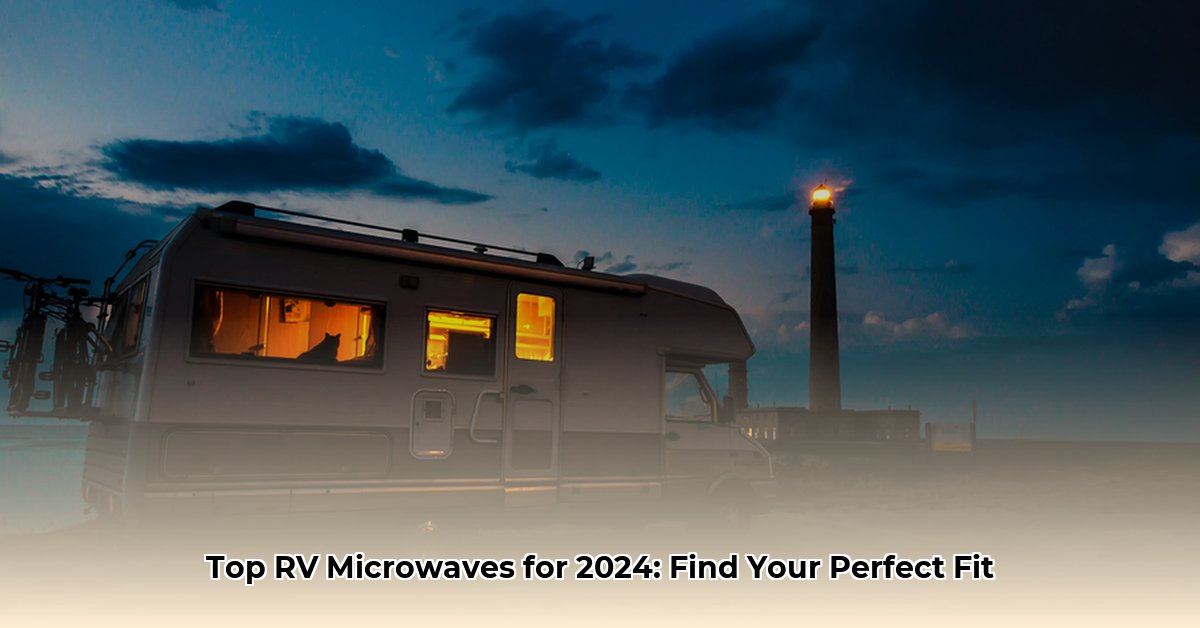Cooking in a small RV kitchen can be tricky. A good RV microwave offers a convenient solution for quick meals and warm snacks. This guide helps you choose the perfect microwave for your RV, covering everything from sizes and power needs to special features and installation. Get ready to upgrade your RV cooking!
RV Microwave Types: Finding the Right Fit
Choosing the right type of microwave is the first step. Let’s look at the three main options:
Convection Microwaves: The Multitaskers
Convection microwaves offer the versatility of microwave heating plus baking and browning capabilities, much like a mini-oven. This makes them great for baking on the road. Be aware that they’re typically larger, pricier, and consume more power.
Countertop Microwaves: Compact and Convenient
Countertop models are your standard, everyday microwaves. Affordable and available in various sizes, their portability is a big plus in a space-conscious RV. They may take up valuable counter space, however.
Built-in Microwaves: Sleek and Integrated
Built-in microwaves offer a streamlined look, integrating seamlessly into your RV’s cabinetry. They free up counter space but may involve more complex installation and often require specific dimensions.
Key Considerations: Size, Power, and Features
Before purchasing, consider these essential factors:
Size and Capacity: Measure Twice, Buy Once
Measure the available space in your RV before buying, accounting for door swing. RV microwaves usually range from 0.5 to 1.5 cubic feet. Smaller RVs may benefit from compact models under 1.0 cubic foot, while larger RVs may accommodate larger sizes.
Power (Wattage): Balancing Speed and Energy
Higher wattage means faster cooking but draws more power. Inverter technology offers more even cooking and potentially lower power consumption, making it ideal for RVs. A 700-900 watt inverter microwave may suffice for smaller RVs or those with limited power. Research suggests that while higher wattages are generally preferred, lower wattages may be adequate for some, particularly with inverter technology.
Features: Essential Extras for RVing
Look for features that enhance RV use, such as:
- Pre-programmed settings: Simplify common cooking tasks.
- Child lock: Essential for families.
- Venting: Crucial for built-in models to prevent moisture.
- Trim kits: Provide a finished look for built-in models.
Top RV Microwave Recommendations
Here are a few example recommendations categorized by type (remember to check current models and reviews):
Convection
- “Gourmet Traveler” (Example): 1.2 cu. ft., ~1200 watts, convection cooking, sensor cooking. Best for full-time RVers and families.
Countertop
- “Nomad Cook” (Example): 0.7 cu. ft., ~700 watts, pre-programmed settings, compact. Best for small spaces and solo travelers.
Built-in
- “SpaceSaver Chef” (Example): 1.0 cu. ft., ~1000 watts, inverter technology, trim kit. Best for upgraded kitchens and couples.
(Note: Models, specifications, and pricing may vary. Check current information before purchasing.)
Installation: DIY or Pro?
Countertop installation is straightforward—just plug it in! Secure the microwave for travel safety. Built-in installations are more complex and might require professional help, especially for venting. Replacing an existing built-in model is usually simpler.
Power Consumption and RV Electrical Systems
RV microwaves use 120V AC. If boondocking, you’ll need an inverter (pure sine wave recommended). Choose an inverter with continuous wattage higher than the microwave’s running wattage and surge wattage higher than the microwave’s surge wattage. Using lower power settings conserves energy.
Troubleshooting and Maintenance
Common issues include tripped breakers (check the breaker and the microwave’s wattage) and uneven cooking (consider an inverter microwave or check the turntable). Regular cleaning and consulting the owner’s manual for specific maintenance are also crucial.
FAQ: Common Questions
-
Can I use a regular microwave in my RV? While possible, a standard home microwave may be too large and power-hungry. RV microwaves are designed for smaller spaces and energy efficiency.
-
What size inverter do I need? The inverter’s continuous wattage must exceed the microwave’s running wattage, and its surge wattage must exceed the microwave’s surge wattage. A 2000-watt pure sine wave inverter often suffices, but larger microwaves may require a 3000-watt inverter.
-
Do all RVs have microwaves? Many new ones do, but it’s not universal. Older models or basic campervans might not include one.
Conclusion
Choosing the right RV microwave can significantly improve your travel experience. By carefully evaluating your needs and considering the factors outlined in this guide, you can find the perfect appliance to simplify cooking and make mealtimes on the road a breeze. Share your experiences and questions in the comments below!
- Gray Kitchen Backsplash Tile: Ideas for a Stylish Upgrade - December 14, 2025
- Backsplash For Gray Cabinets: Choosing the Right Backsplash Style - December 13, 2025
- Gray And White Backsplash: Ideas For Timeless Style - December 12, 2025









